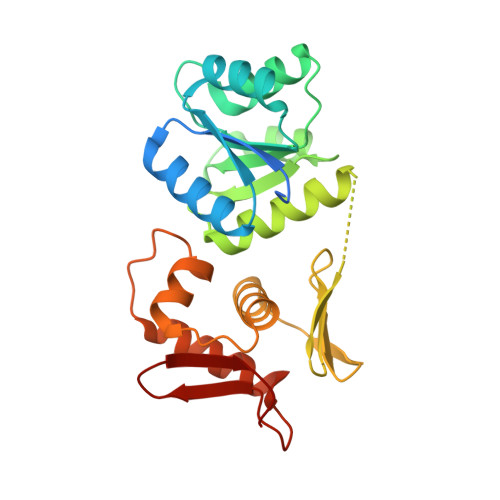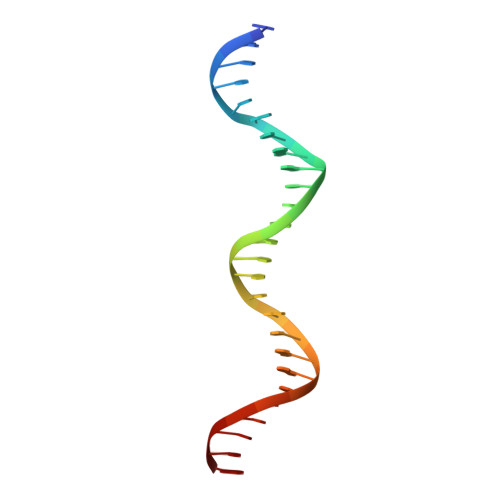Structural basis of DNA sequence recognition by the response regulator PhoP in Mycobacterium tuberculosis.
He, X., Wang, L., Wang, S.(2016) Sci Rep 6: 24442-24442
- PubMed: 27079268
- DOI: https://doi.org/10.1038/srep24442
- Primary Citation of Related Structures:
5ED4 - PubMed Abstract:
The transcriptional regulator PhoP is an essential virulence factor in Mycobacterium tuberculosis, and it presents a target for the development of new anti-tuberculosis drugs and attenuated tuberculosis vaccine strains. PhoP binds to DNA as a highly cooperative dimer by recognizing direct repeats of 7-bp motifs with a 4-bp spacer. To elucidate the PhoP-DNA binding mechanism, we determined the crystal structure of the PhoP-DNA complex. The structure revealed a tandem PhoP dimer that bound to the direct repeat. The surprising tandem arrangement of the receiver domains allowed the four domains of the PhoP dimer to form a compact structure, accounting for the strict requirement of a 4-bp spacer and the highly cooperative binding of the dimer. The PhoP-DNA interactions exclusively involved the effector domain. The sequence-recognition helix made contact with the bases of the 7-bp motif in the major groove, and the wing interacted with the adjacent minor groove. The structure provides a starting point for the elucidation of the mechanism by which PhoP regulates the virulence of M. tuberculosis and guides the design of screening platforms for PhoP inhibitors.
- Department of Biochemistry &Molecular Biology, Uniformed Services University of the Health Sciences, 4301 Jones Bridge Road, Bethesda, Maryland 20814, USA.
Organizational Affiliation:





















